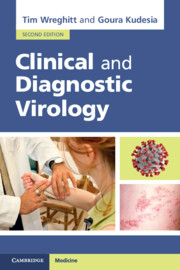Refine search
Actions for selected content:
52 results
Chapter 8 - Neurorespiratory Diagnostics
-
-
- Book:
- Clinical Neurorespiratory Medicine
- Published online:
- 26 May 2025
- Print publication:
- 19 June 2025, pp 71-79
-
- Chapter
- Export citation
Diagnostic Biomarkers for Heat Stroke and Heat Exhaustion: A Scoping Review
-
- Journal:
- Disaster Medicine and Public Health Preparedness / Volume 19 / 2025
- Published online by Cambridge University Press:
- 17 June 2025, e153
-
- Article
-
- You have access
- Open access
- HTML
- Export citation
6 - Assessing and Improving MCMC
-
- Book:
- Scalable Monte Carlo for Bayesian Learning
- Published online:
- 16 May 2025
- Print publication:
- 05 June 2025, pp 189-224
-
- Chapter
- Export citation
Chapter 32 - Anaesthesia for Cardiac Catheterisation and Other Investigative Procedures in Children
-
-
- Book:
- Core Topics in Paediatric Anaesthesia
- Published online:
- 06 February 2025
- Print publication:
- 13 February 2025, pp 357-367
-
- Chapter
- Export citation
Reconstructing interpretable features in computational super-resolution microscopy via regularized latent search
-
- Journal:
- Biological Imaging / Volume 4 / 2024
- Published online by Cambridge University Press:
- 30 May 2024, e8
-
- Article
-
- You have access
- Open access
- HTML
- Export citation

Clinical and Diagnostic Virology
-
- Published online:
- 11 April 2024
- Print publication:
- 18 April 2024
Chapter 3 - How can students demonstrate their learning in science?
- from Part 1 - Planning for science
-
- Book:
- Primary Science Education
- Published online:
- 30 June 2023
- Print publication:
- 15 June 2023, pp 69-95
-
- Chapter
- Export citation
Serum-soluble suppression of tumourigenicity-2 as a biomarker in children with congestive heart failure
-
- Journal:
- Cardiology in the Young / Volume 33 / Issue 12 / December 2023
- Published online by Cambridge University Press:
- 13 March 2023, pp. 2481-2486
-
- Article
- Export citation
On-farm evaluation of the Salmon Welfare Index Model (SWIM 1.0): theoretical and practical considerations
-
- Journal:
- Animal Welfare / Volume 25 / Issue 1 / February 2016
- Published online by Cambridge University Press:
- 01 January 2023, pp. 135-149
-
- Article
- Export citation
Hysteria in neurology: a diagnostic approach to conversive disorder
-
- Journal:
- European Psychiatry / Volume 65 / Issue S1 / June 2022
- Published online by Cambridge University Press:
- 01 September 2022, p. S395
-
- Article
-
- You have access
- Open access
- Export citation
Clinical validation of EDIT-B test for the diagnosis of bipolar disorder
-
- Journal:
- European Psychiatry / Volume 65 / Issue S1 / June 2022
- Published online by Cambridge University Press:
- 01 September 2022, p. S413
-
- Article
-
- You have access
- Open access
- Export citation
10 - Assessment in health and physical education
-
-
- Book:
- Health and Physical Education
- Published online:
- 12 August 2022
- Print publication:
- 16 August 2022, pp 231-258
-
- Chapter
- Export citation
Behaviours of general practitioners in the city of douala’s in cameroon in front of depressive disorders
-
- Journal:
- European Psychiatry / Volume 64 / Issue S1 / April 2021
- Published online by Cambridge University Press:
- 13 August 2021, p. S324
-
- Article
-
- You have access
- Open access
- Export citation
Mind the gap! the lack of concordance in diagnostic in liaison psychiatry in a portuguese hospital
-
- Journal:
- European Psychiatry / Volume 64 / Issue S1 / April 2021
- Published online by Cambridge University Press:
- 13 August 2021, pp. S653-S654
-
- Article
-
- You have access
- Open access
- Export citation
Diagnostic change 2 years after a first episode of psychosis
-
- Journal:
- European Psychiatry / Volume 64 / Issue S1 / April 2021
- Published online by Cambridge University Press:
- 13 August 2021, p. S531
-
- Article
-
- You have access
- Open access
- Export citation
Coronary artery spasm in a 15-year-old male in diabetic ketoacidosis
- Part of
-
- Journal:
- Cardiology in the Young / Volume 31 / Issue 9 / September 2021
- Published online by Cambridge University Press:
- 15 March 2021, pp. 1507-1509
-
- Article
-
- You have access
- Open access
- HTML
- Export citation
Evaluation of the Baermann–Wetzel method for detecting lungworm larvae in wild ruminants from faecal samples
-
- Journal:
- Journal of Helminthology / Volume 95 / 2021
- Published online by Cambridge University Press:
- 08 March 2021, e13
-
- Article
- Export citation
2 - From Birth in a British Orphanage to Assessments of American Indians’ Development
-
-
- Book:
- The Science of Violent Behavior Development and Prevention
- Published online:
- 28 January 2021
- Print publication:
- 18 February 2021, pp 26-45
-
- Chapter
- Export citation
Chapter 12 - Assessment and STEM
- from Part 2 - How do I STEM?
-
- Book:
- STEM Education in the Primary School
- Published online:
- 13 February 2021
- Print publication:
- 22 January 2021, pp 301-322
-
- Chapter
- Export citation

Diagnostic Bone Marrow Haematopathology
-
- Published online:
- 12 November 2020
- Print publication:
- 21 January 2021
